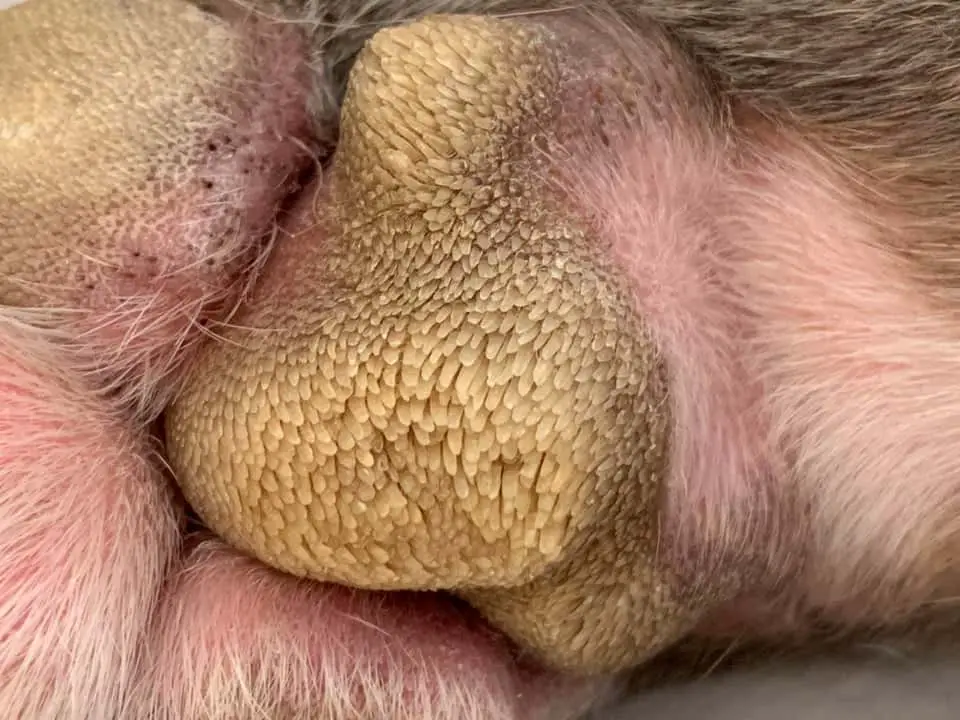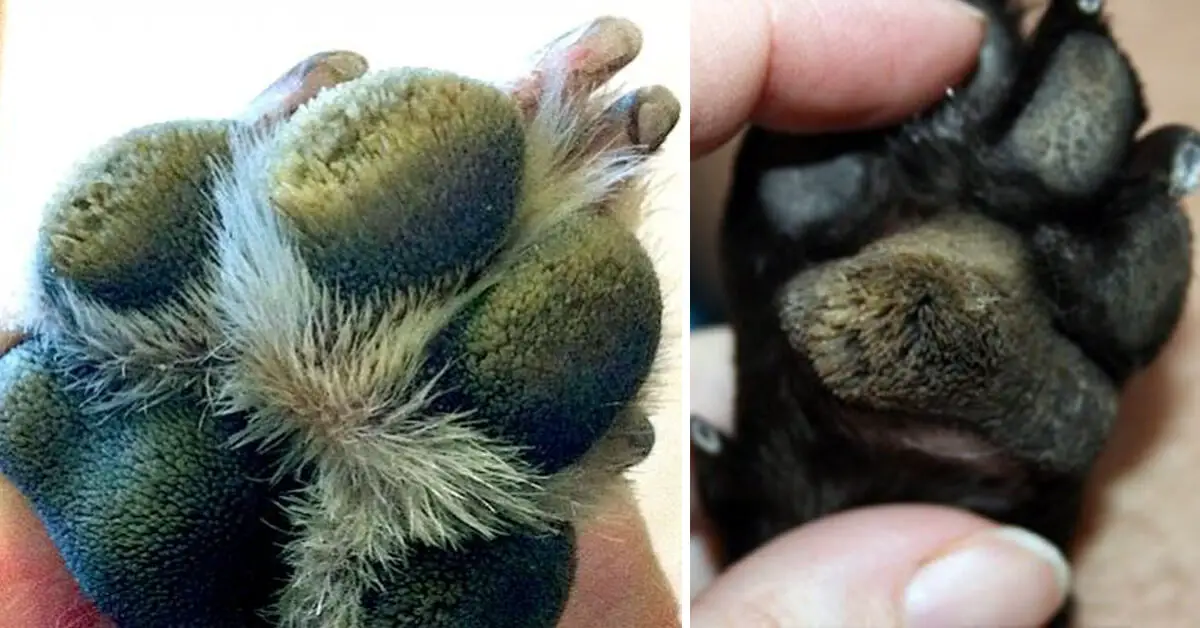Hyperkeratosis in Dogs | Symptoms & Treatment
04.12.2021.
Dogs are prone to different health conditions that can affect their hair growth and the overall quality of their coat. One of the things dogs can get is hyperkeratosis. If your dog is exhibiting worrying signs and you noticed something weird on their paws, it might be a case of hyperkeratosis in dogs. Many dog owners automatically get worried and want to know more about this condition. If you think your dog might have it, here’s what you should know about this condition.
What is hyperkeratosis in dogs?
Canine hyperkeratosis is a health condition where the dog’s body produces too much keratin. When that happens, the dog can be in pain, and this condition can be pretty nasty and scary. We cannot talk about hyperkeratosis without talking about keratin.
What is keratin?
Keratin is a protein that holds the skin cells together. It is absolutely necessary for your dog’s body, but overproduction can cause more harm than good. Without keratin, the body would have no natural barrier from the environment.
How can I know if my dog has hyperkeratosis?
Knowing your dog has hyperkeratosis is very important. However, most dog owners can’t exactly pinpoint what condition their dog has. Nevertheless, we can notice something weird going on with our dog and take them for a checkup. The easiest way to spot hyperkeratosis in dogs is by learning which symptoms point to this condition.
What are the symptoms of hyperkeratosis?
Dog owners are not vets, so noticing all the possible symptoms of a specific health condition can be tricky. It is important you keep a close eye on your dog so you can notice anything weird. The good news is that hyperkeratosis symptoms should be pretty easy to notice. This condition usually affects the dog’s paws, ears, elbows, hips, or nose. Here are the most common symptoms of hyperkeratosis in dogs;
- Secondary infections
- Ulcerations
- Limping
- Loss of skin color in the affected area
- Cracks of fissures
If the dog exhibits these symptoms, you should immediately take them to the vet for examination and consultations. Despite all these possible hyperkeratosis symptoms, the easiest way to spot this condition, especially on the dog’s paws, is the “hairy” appearance. The affected paw or paws will “give affected areas a crusty, horned, or hairy appearance.”
What causes hyperkeratosis in dogs?
If you want to make sure your dog never develops it, you need to understand what causes hyperkeratosis. However, in many cases, vets don’t know what causes it. In many cases, this condition is idiopathic. Some hyperkeratosis cases have a known cause. This condition can develop as a result of other illnesses or conditions. Here are some of those of the possible hyperkeratosis causes;
- Distemper
- Zinc-responsive Dermatosis
- Papilloma virus infection
- Ichthyosis
- Hepatocutaneous syndrome
- Congenital disorders of cornification or keratinization
- Pemphigus foliaceus
What is the prognosis?
In most cases, hyperkeratosis in dogs is not that dangerous. However, it needs to be treated. The dogs that develop this health condition will most likely carry it for the rest of their lives. The good news is that it doesn’t threaten the dog’s life. However, it can make it uncomfortable, especially if it affects the paws. The condition can affect how a dog walks, their gait and can cause them pain. It is crucial you go to your vet and ask for treatment options.
How is hyperkeratosis in dogs diagnosed?
The good news is that hyperkeratosis in dogs is relatively easy to diagnose. Even inexperienced vets can diagnose it on appearance only. However, some cases of this disease can be a bit more challenging to diagnose. Luckily, vets have different tests they can perform to confirm the condition. The three main ways are;
- Biopsy
- Histopathology
- Skin cytology
How is it treated?
Most dog owners have one question for their vets; “How is hyperkeratosis treated?” Naturally, we want to know if we can help our dogs ease the pain that hyperkeratosis causes them, especially if the disease affects their paws. The good news is that hyperkeratosis in dogs can be treated relatively easily. In fact, dogs that have the condition but don’t exhibit any symptoms don’t require any treatment.
For dogs that have affected paws, the treatment usually involves simply trimming the keratin growths. Keratin growths, just like nails or hair, have no nerve endings or blood flow. To get rid of the keratin growths, you can use nail clippers to trim them down.

How to trim keratin growths?
The best way to trim hyperkeratosis growths on the dog’s paws is by using nail clippers and taking your time to do that. It is essential you take it slow because you don’t want to accidentally hurt the skin below it. You can also soak your dog’s paws in warm bath water with Epsom salts for 15 minutes. It will soften the growths and make your dog’s life more comfortable.
Is hyperkeratosis in dogs contagious?
The good news is that your dog cannot infect you or other pets with hyperkeratosis. This is either a genetic issue or can be a result of other conditions. However, you need to make sure hyperkeratosis doesn’t occur due to other diseases that might infect you or other pets.
Is it preventable?
In many cases, there is no way of preventing hyperkeratosis in dogs. It can be genetic, so the best thing to do is avoid breeding dogs that show hyperkeratosis symptoms. Another way to make sure your dog is safe from this disease is by vaccination. Since this condition can result from canine distemper, the best thing to do would be to vaccinate your dog regularly. Make sure your dog is up to date with their vaccinations, and you will protect them against different diseases.
World Dog Finder team









Share